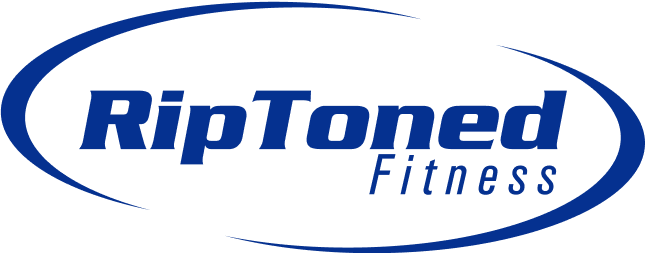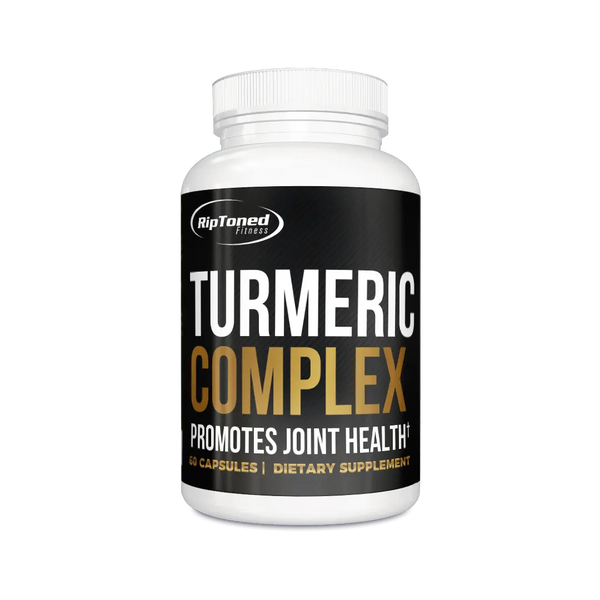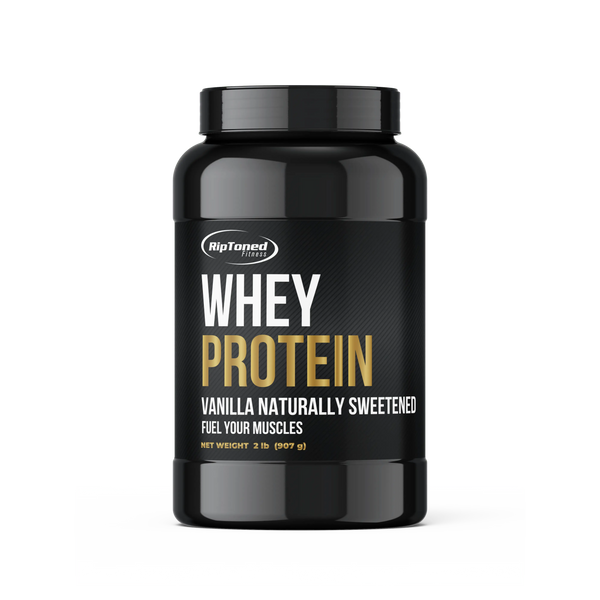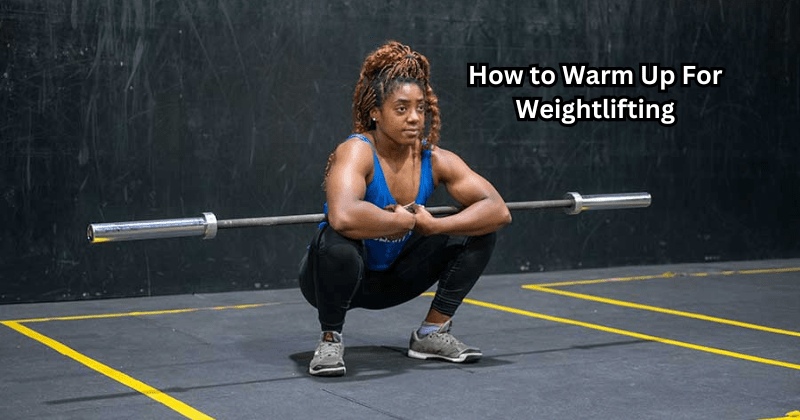
How to Warm Up For Weightlifting
Mark PasayShare
Embarking in a weightlifting session without proper preparation can increase the risk of injury and hinder performance. Warming before lifting weights is crucial to prime your muscles, enhance flexibility, and optimize your overall workout experience.
A well-structured warm-up routine prepares your body for the physical demands of weightlifting and improves blood circulation, joint mobility, and neuromuscular activation. Incorporating dynamic stretches, light cardio exercises, and specific movements targeting the muscles you intend to work can notably enhance your lifting performance and reduce the likelihood of strains or sprains.
Discovering the art of warming up effectively paves the way for safer, more effective weightlifting sessions. Here are a few tips to help you master the art of warming up for weightlifting.
Key Takeaways
- A proper warm-up routine improves muscle flexibility, blood circulation, and neuromuscular activation.
- Warming up before weightlifting reduces the risk of injury and enhances overall performance.
- Dynamic stretches, light cardio exercises, and specific movements targeting the muscles you intend to work on are crucial components of a warm-up routine.
What is the Connection Between Warm-Up and Weightlifting Performance?
A proper warm-up is the foundation of a successful weightlifting session. It helps to activate your central nervous system (CNS), which controls muscle movement and prepares it for impending physical exertion. A gradual increase in body temperature also boosts blood flow, and it delivers an oxygen-rich blood supply to your muscles, making them more pliable, elastic, and ready for intense exercise. To increase blood flow, you should incorporate low-intensity cardio exercises such as jogging, cycling, or jumping jacks into your warm-up routine.
Moreover, a good warm-up prepares your mind for the workout, helping you focus and concentrate on proper form, technique, and muscle engagement. It can also improve your range of motion, joint stability, and body awareness – crucial factors for injury prevention.
How to Warm Up For Weightlifting Effectively
An effective warm-up routine should last 10 to 15 minutes and include dynamic movements that replicate your intended workout's patterns, range of motion, and intensity. Here are some essential components of an efficient weightlifting warm-up.
Light Cardio Exercise
Start your warm-up with a light cardio exercise such as jogging, cycling, or rowing for five to seven minutes. This increases your heart rate, increases body temperature, and activates your cardiovascular system. A light workout can target so many different muscle groups.
For example, a rowing machine can target your arm muscles, shoulders, and back, while jogging can engage your glutes, hamstrings, and quads.
Old School Basic Move
After the light cardio, move on to basic movements such as bodyweight squats, lunges, push-ups, or jumping jacks. These exercises help to activate and engage muscles throughout your body. They also enhance joint mobility and improve coordination. Begin with a couple of light warm-up sets of eight to ten repetitions each, and gradually increase the intensity as you move on.
Dynamic Stretches
Next up are dynamic stretches that involve controlled and fluid movements through a full range of motion. These stretches include leg swings, arm circles, torso rotations, and shoulder rolls. Unlike static stretching, where you hold a stretch for an extended period, dynamic stretches should be done continuously for 10-15 repetitions. A foam roll for the lower back and a foam roller are great for warm-up muscles.
Arm circles can loosen up your shoulders and prepare them for pressing exercises, while torso rotations can mobilize your spine and hips before squats or deadlifts. Dynamic warm stretches help prime specific muscle groups you'll use during your weightlifting session.
Specific Muscle Activation
Lastly, target the specific muscle groups you intend to work on during your weightlifting session. For example, if you plan to do deadlifts and squats, incorporate glute bridges, hip thrusts, or leg swings to activate and prime those muscles. The heart rate and drive-up core temperature are beneficial for muscle growth.
Squat Mobilization (for lower-body training days)
For lower-body training days, squat mobilization is an excellent warm-up exercise to increase hip mobility and prepare your body for squats.
Start by standing with your feet shoulder-width apart and push your hips back while keeping your chest up and spine neutral. Hold this position for a few seconds before driving your hips forward to stand up straight.
Shoulder Dislocations (for upper-body training days)
Shoulder dislocations are a beneficial warm-up exercise for upper-body training days. Hold a resistance band or broomstick with both hands at shoulder-width apart. Slowly raise the band or stick overhead while keeping your arms straight, then bring it down behind you until you feel a stretch in your chest and shoulders.
Go with your personalized warm-up routine, which will help you prepare for a productive and safe weightlifting session. Experiment with different exercises and stretches, listen to your body, and adjust accordingly.
Related Products
Tips for a Safe and Effective Warm-Up
These tips can help you get the most out of your warm-up routine.
- Start with low-intensity exercises and gradually increase the intensity.
- Focus on warming up the muscles you will be using during your weightlifting session.
- Use proper form and technique to avoid injury during warm-up exercises.
- Incorporate dynamic stretches instead of static ones.
- Take breaks if necessary, but maintain a consistent flow throughout your warm-up routine.
If you're ready to dive deeper into the wide world of warm-ups, check out some online warm-up routines. Remember, a good warm-up before lifting weights is essential for preventing injuries and enhancing performance. For total body blood circulation, stick with the cardio exercises before you get started because muscle blood flow is essential for muscle growth.
Can You Lift Heavier If You Warm Up Less?
While some people may believe that a longer warm-up session can lead to better weightlifting performance, research has shown that this may not always be true. A study published in the Journal of Strength and Conditioning Research found that a shorter warm-up period (just two minutes of low-intensity exercise) was as effective at increasing strength and power output as a 12-minute warm-up routine.
However, this doesn't mean you should skip your warm-up altogether or cut it short every time. The intensity and duration of your warm-up will depend on various factors, such as the type of workout, your fitness level, and any pre-existing injuries. It's crucial to listen to your body and adjust your warm-up accordingly.
What Things to Avoid When Warming Up
While warming up is essential, there are a few things you should avoid to ensure an effective and safe warm-up routine. These include:
- Skipping warm-up altogether
- Overstretching or using improper form during stretches
- Performing static stretches before a workout (save them for after your session)
- Not warming up the muscles you will be using during your weightlifting session
Remember, warming up is not the same as working out. The purpose of a warm-up is to prepare your body for the upcoming workout and prevent injuries, not exhaust yourself before even starting.
FAQs
How should I warm up before lifting weights?
A warm-up routine should include light cardio, dynamic stretches, and specific muscle activation exercises. It's also essential to focus on the muscles you will be using during your weightlifting session.
What is the 6 12 25 method?
The 6-12-25 method is a warm-up technique developed by strength coach Ian King. It involves performing six reps of an exercise with light weight, followed by 12 reps with slightly heavier weight, and then finishing with 25 reps using the heaviest weight you can handle.
How long between sets?
The time between sets can vary depending on your fitness level and the type of workout you are doing. Generally, it is recommended to take 1-2 minutes of rest between sets for strength training exercises and 30 seconds to 1 minute for endurance exercises. However, always listen to your body and adjust accordingly.
In Conclusion
In essence, the significance of a tailored warm-up routine before weightlifting cannot be overstated. By engaging in dynamic stretches, light cardio activities, and targeted muscle activation exercises, you set the stage for a safer and more productive lifting session. The preparatory warm-up not only enhances blood flow and flexibility but also primes your muscles and joints for optimal performance, reducing the risk of injuries.
Embracing a comprehensive warm-up approach as a foundational aspect of your weightlifting regimen cultivates a conducive environment for physical progress, longevity, and overall well-being.

Related Posts
-
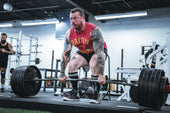
POWERLIFTING THE RIGHT WAY
-

Unlock Your Strength Potential: Conquer Weak Grip Strength Now
-

Bench Press to Success - Mastering your form
-
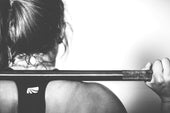
5 Tips for Women to Build Lean Muscle Tone in 2024
-

How to Get the Most Out of a Lifting Session
-

Working Out Under the Weather
-

The Lesser-known Benefits of Weightlifting
-

How Weight Training Supports Immune Health
-

The History of Weightlifting
-

Rest up to build up
-

4 Tips to Improve Lifting Gains The Right Way
-

4 Tips to Prevent Training Injuries
-

Top 3 Work Out Myths EXPOSED!!
-
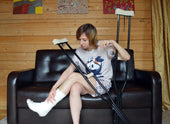
Common Lifting Injuries (And How to Avoid Them)
-

Hit the Gym or Stay at Home?
-

Weightlifting Benefits – Many Health Benefits for Men and Women
-

How Many Times a Week Should I Deadlift? A Guide to Deadlift Frequency and Programming
-

Can Deadlifts Hurt Your Back? Understanding Risks and Prevention
-

Why Does Whey Protein Make Me Sick
-

Can Protein Powder Upset Your Stomach
-

What To Mix Unflavored Protein Powder With
-

Crush Your PRs: The Gradual Strength Increase Guide for CrossFitters
-

Whey vs Collagen Protein: Which Is Best for You?
-

Can I Take Whey Protein Without Working Out? What You Need to Know
-
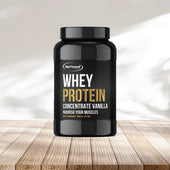
Why Does Whey Protein Hurt My Stomach: Causes and Solutions
-

Boost Your Run: Should You Take Pre-Workout Before Running?
-

Top Pre-Workout Benefits: Boost Energy and Enhance Performance
-
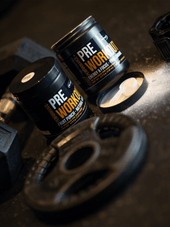
How Long Does Pre-Workout Take to Kick In? Find Out Here!
-

How Long Does Pre-Workout Last? Your Essential Guide
-

Does Pre-Workout Give You Pimples
-

How Long Does Pre-Workout Stay in Your System
-

When Should I Take Pre-Workout
-

Can I Mix Creatine With Pre-Workout
-

Long Term Side Effects of Pre-Workout Supplements
-

How Much Caffeine in Pre-Workout
-

Pre-Workout Alternatives
-

Does Pre-Workout Break a Fast
-

What to Eat Pre-Workout
-

What is In Pre-Workout
-

Advantages of Pre Workout Supplements
-

How To Get Rid Of Pre Workout Itch
-

How To Make Your Own Pre Workout
-

How Many Scoops Of Pre Workout Should I Take
-

How Bad Are Pre Workouts For You
-

How Long Before A Workout Should I Take Pre-Workout
-

How Much Caffeine Is In Bucked Up Pre Workout
-

How Long Does Pre Workout Increase Blood Pressure
-

What Does Pre Workout Do
-

Can I Use Sprite As Pre Workout
-

Can Supplements Boost Weightlifting Motivation
-

Why Do Weightlifters Wear Belts
-

Does Lifting Weights Cause Varicose Veins? What You Need to Know
-

Does Lifting Weights Affect Uterus Health? What Women Need to Know
-

How Lifting Weights Can Affect Your Sex Drive: Does Lifting Weights Make You Horny?
-

Why Don't I Sweat When I Lift Weights? Understanding the Causes
-

Why Are Physical Fitness Attitudes Important? Insights & Benefits
-

Why is Anytime Fitness So Expensive? Understanding Membership Costs
-

Substitute For Whey Protein Powder In Keto Baking
-

How Many Calories Does 1 Hour of Weightlifting Burn
-

A Guide To Cleaner Protein Supplementation
-

What Causes The Frothiness in Your Fitness Drink
-

How to Take Collagen Safely After a Gastric Bypass: Essential Tips
-

Why Do Protein Shakes Make Me Nauseous? Top Reasons and Solutions
-

Why Does My Stomach Hurt After Protein Shake? Understanding Your Digestive Discomfort
-

Can I Take Collagen After Gastric Bypass
-

Why Does My Protein Shake Foam
-

Best Belt for CrossFit: Complete Guide 2025
-

Rip Toned vs SBD Belts: Which Brand Offers Better Value and Performance?
-

The Complete Guide to Women's Weightlifting Belts
-
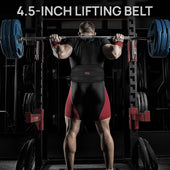
Should Beginners Use a Weightlifting Belt
-

10mm vs 13mm Belt Thickness: The Complete Guide
-

Prong Buckle vs Lever Buckle Belts: The Ultimate Comparison Guide
-

Powerlifting Belts vs Bodybuilding Belts
-

Weightlifting Straps vs. Lifting Hooks: Which is Better?
-

How to Treat Weightlifters Elbow
-

Should You Use Lifting Straps During Bicep Curls for Better Gains?
-

Weightlifting Straps vs. Bare Hands
-

Benefits of Using Weightlifting Straps in Training
-

Mistakes to Avoid When Using Weightlifting Straps
-

Wrist Wraps While Doing Curls
-

Should I Use Wrist Wraps for Bench Press
-

How to Clean Wrist Wraps
-

Are Wrist Wraps Necessary
-

The Ultimate Deadlift Guide: From Form to Performance
-

What Exercises to Use Wrist Wraps For?
-

Are Wrist Wraps Cheating on Bench?
-

Do Wrist Wraps Make You Stronger?
-

Do Wrist Wraps Help With Grip Strength
-

When to Start Using Wrist Wraps
-

Best Weightlifting Belts 2025: Ultimate Buyer's Guide
-
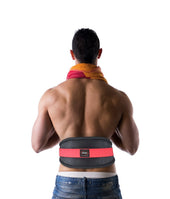
How to Measure for a Weightlifting Belt
-

Can Wrist Wraps Boost Your Grip Strength in Weightlifting?
-

Should You Use Wrist Wraps for Bench Press and Overhead Press?
-

Do Wrist Wraps Help with Wrist Pain During Strength Training? Find Out Here
-

How Can Wrist Wraps Prevent Injury During Heavy Lifting?
-

How Do You Use Weightlifting Straps: A Simple Guide for Better Lifts
-

How to Pick a Lifting Belt: A Practical Guide for Every Lifter
-

How to Measure for Lifting Belt
-

Do Weight Lifting Belts Help Lower Back Pain
-

Do I Need a Lifting Belt
-
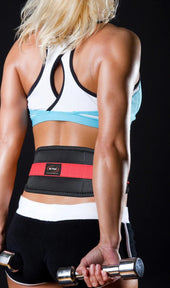
Purpose of Weight Lifting Belt
-

When to Use a Lifting Belt
-
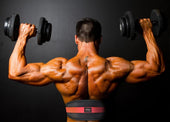
What Does A Lifting Belt Do
-

What Do Wrist Wraps Do For Lifting
-

How To Wrap A Wrist For Carpal Tunnel
-

How To Wrap Wrist For Pain
-

What Are Wrist Wraps For
-

How Do You Use Weightlifting Straps
-

Why Is Mental Focus Important in Powerlifting? The Key to Peak Performance
-

Can Bodybuilding Help with Fat Loss? Discover Proven Benefits
-

Mastering the Basics: How to Improve Your Powerlifting Technique
-

Why Is Proper Form Crucial in Powerlifting? Tips for Safe and Effective Lifting
-

Can Powerlifting Increase Athletic Performance? Exploring Strength Gains and Sport Benefits
-

Top Tips on How to Avoid Common Injuries in Bodybuilding
-

Why Is Recovery Essential in Bodybuilding: Key Strategies and Benefits
-

Can Powerlifting Improve Overall Fitness? Explained
-

How Many Deadlifts Should I Do?
-

How Much Can a 17 Year Old Deadlift? Average Weights and Tips
-

Why Aren’t My Arms Growing as Fast as My Chest? Top Reasons Explained
-

How to Do Back Compression Deadlift: Best Tips for Pain-Free Lifting
-

Why Is My Bench Press Not Increasing
-

Unlock Your Potential: How to Get Stronger Gradually
-

Unlock Muscle Growth: Understanding What Is the 6-12-25 Rule
-

5 Lbs of Muscle in a Month? Let's Get Real
-

Get that celebrity booty in 10 easy to do work out routines
-
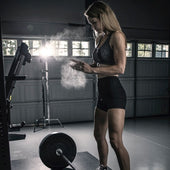
A.M. vs P.M. Workouts
-

Fasting Do’s and Dont's
-

5 Surprising Sources of Protein
-

Home Workout Upgrade Must-haves
-

Top 5 Reasons You Aren’t Reaching Your Weightlifting Goals
-

Squats: A Must in Weightlifting and for Strength Training
-
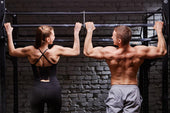
Weightlifting Routines for Men, Women and Beginners
